site search
online catalog
CIVIL WAR ZOUAVE FEZ, LIKELY SECOND-ISSUE 11th NEW YORK, ELLSWORTH ZOUAVES
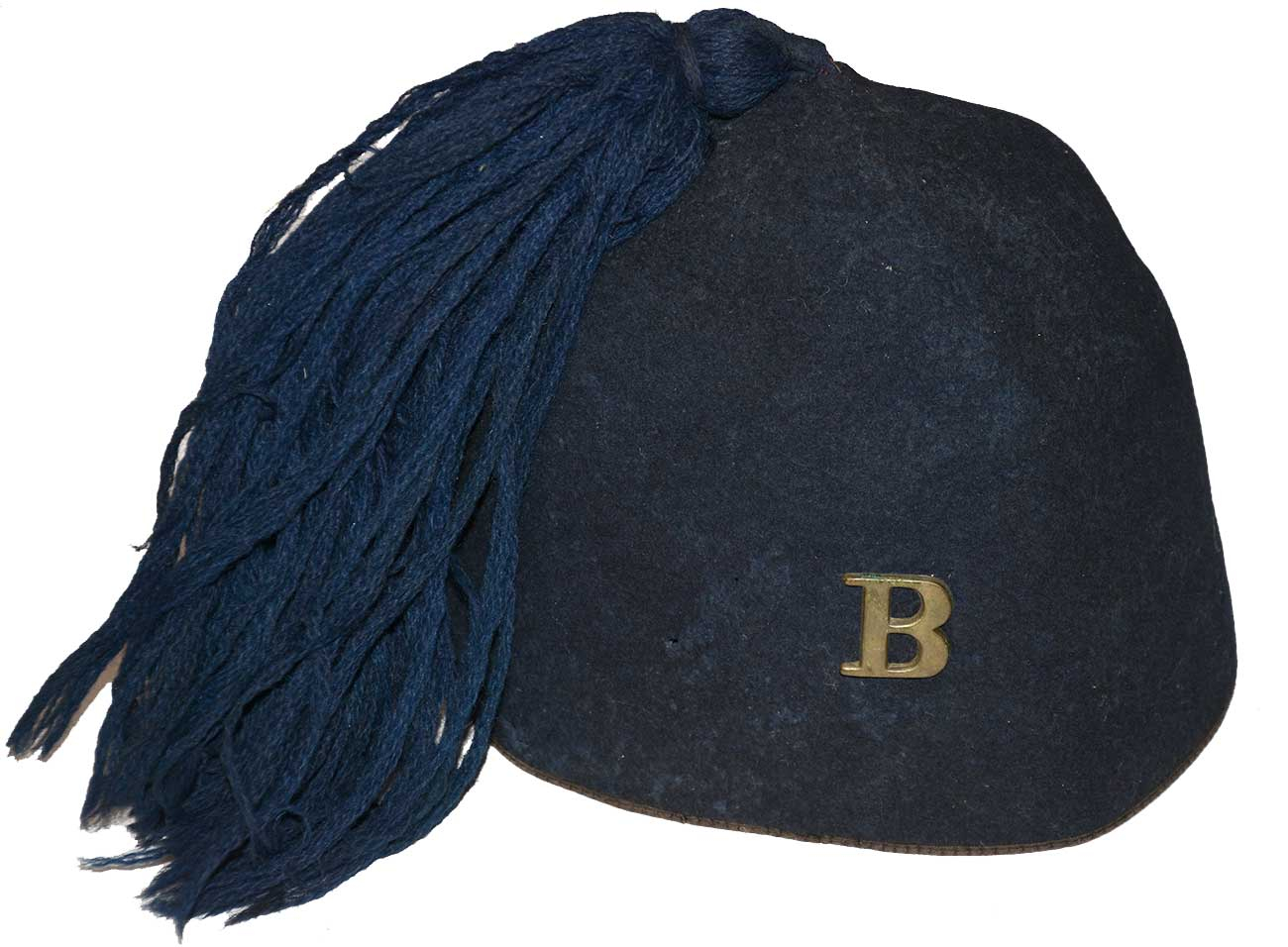
Hover to zoom

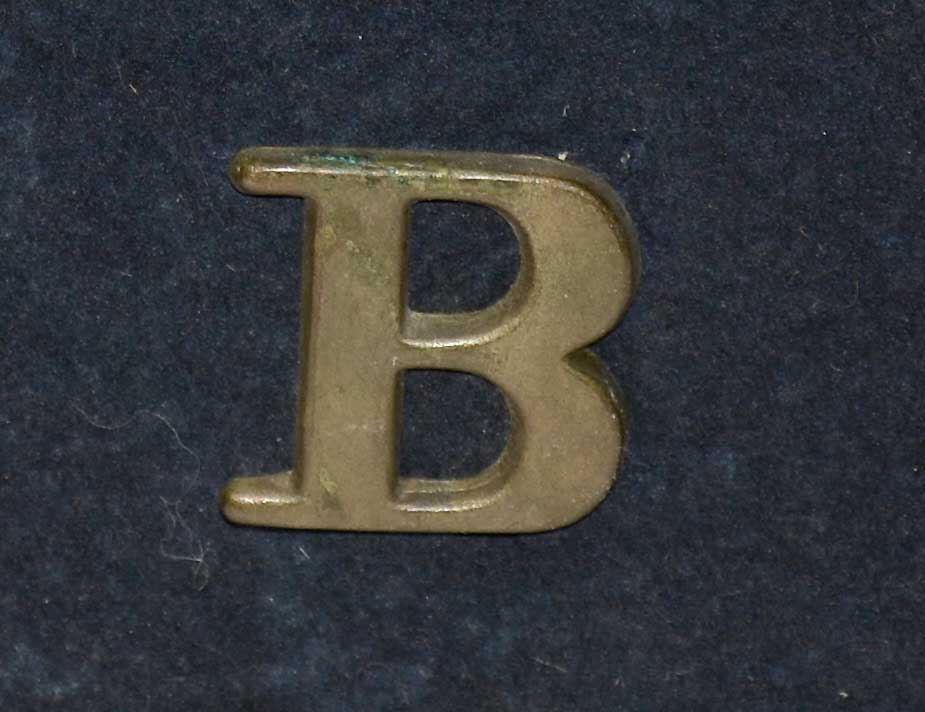

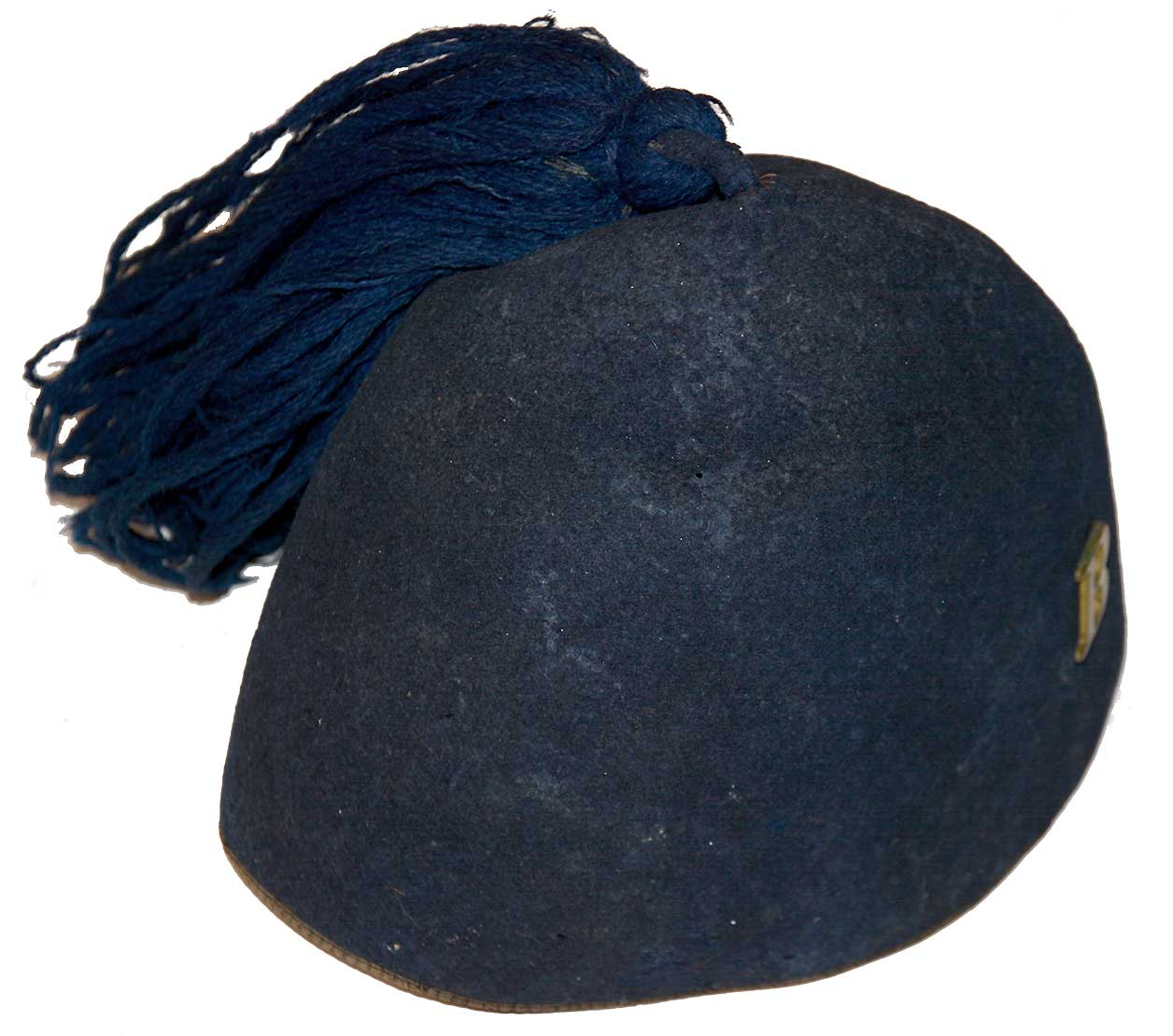
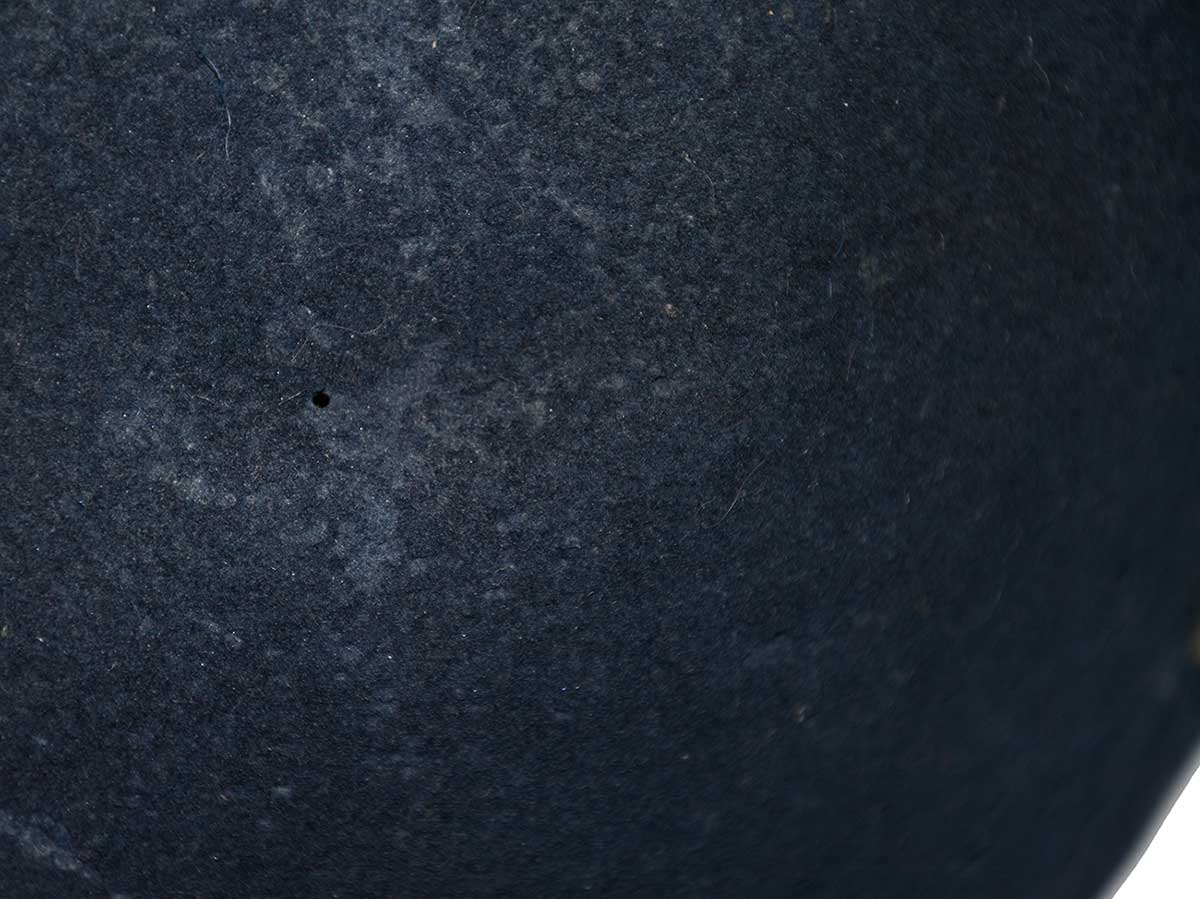
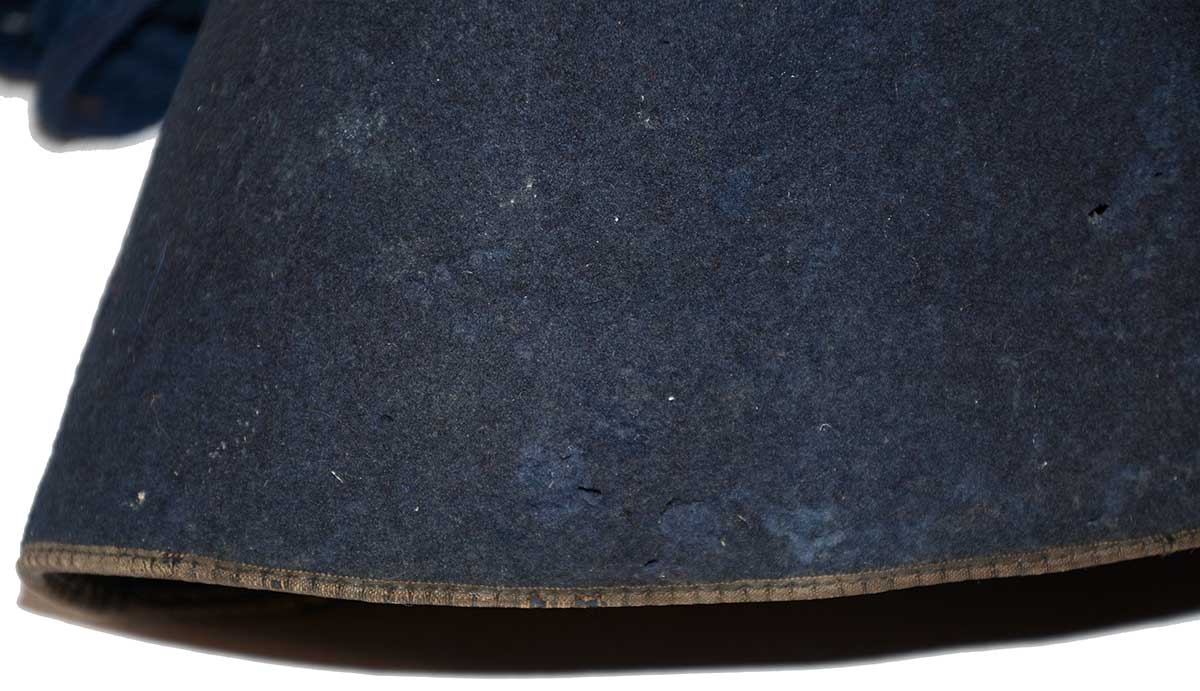
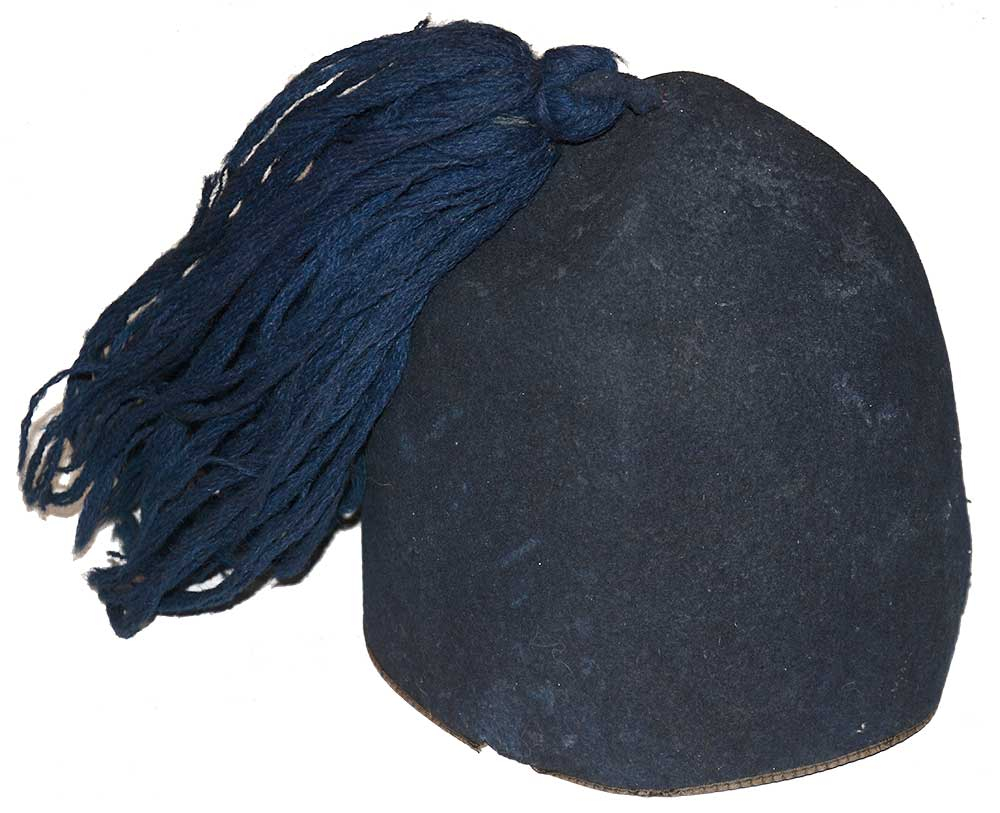
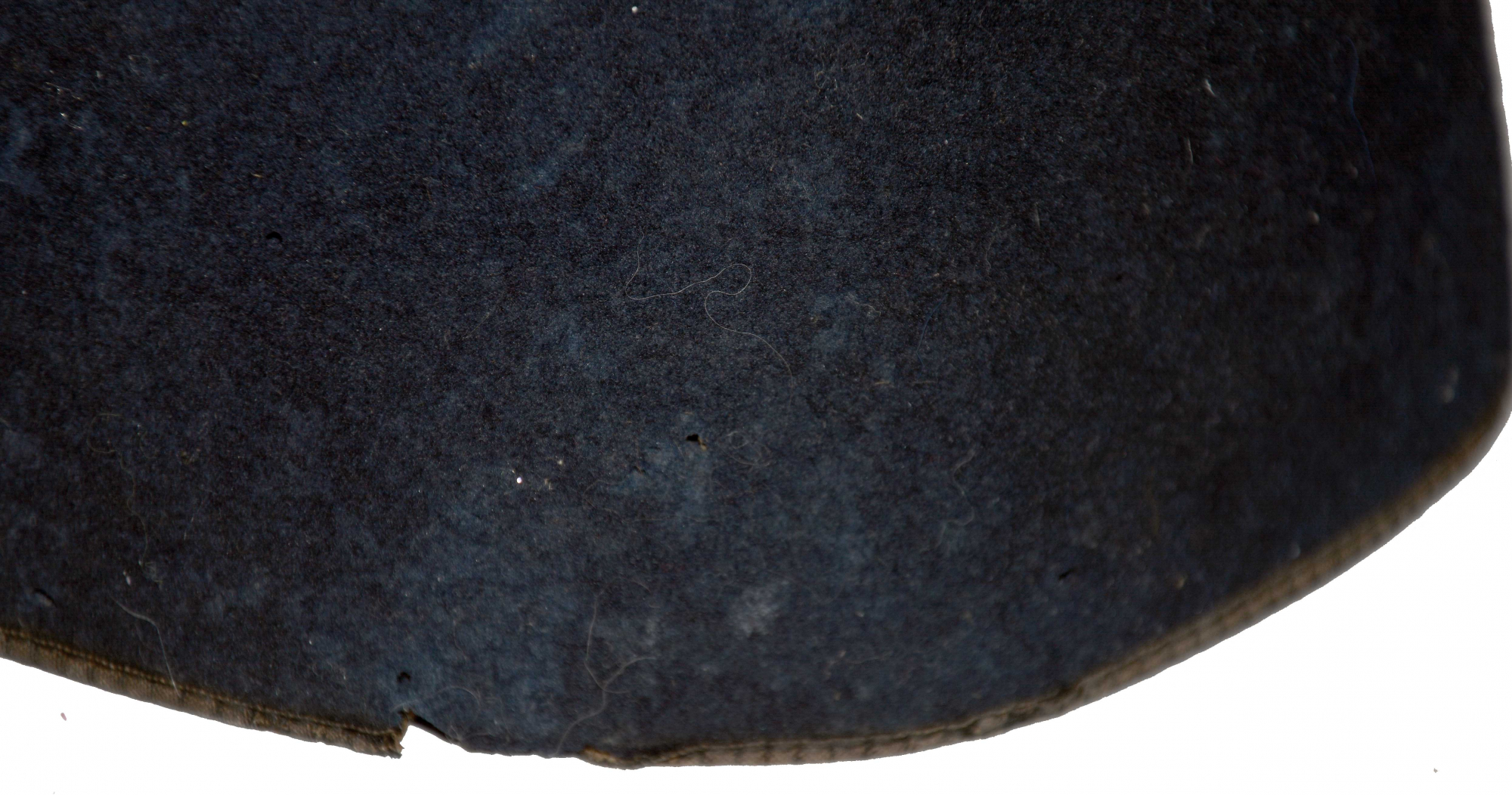
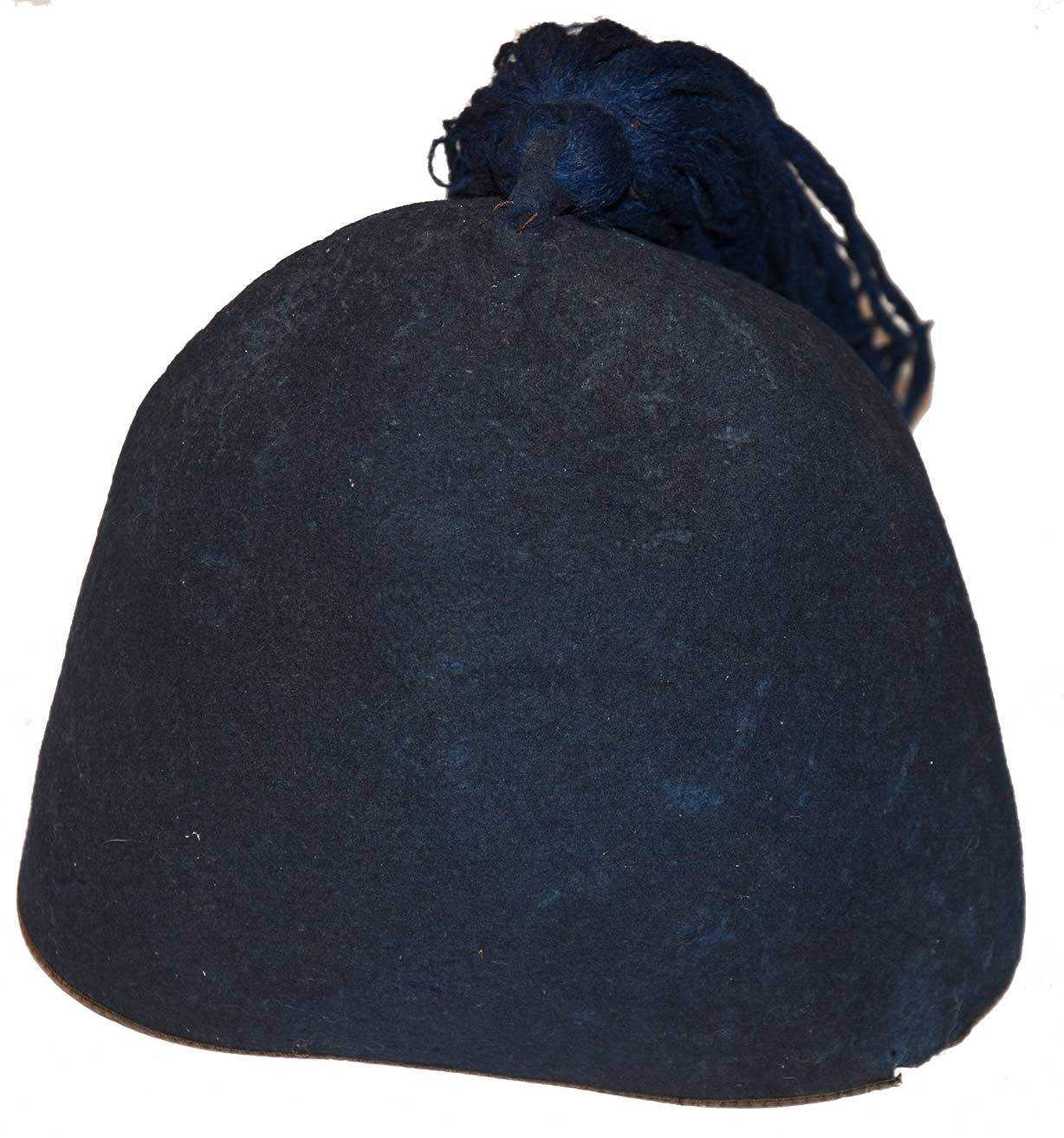
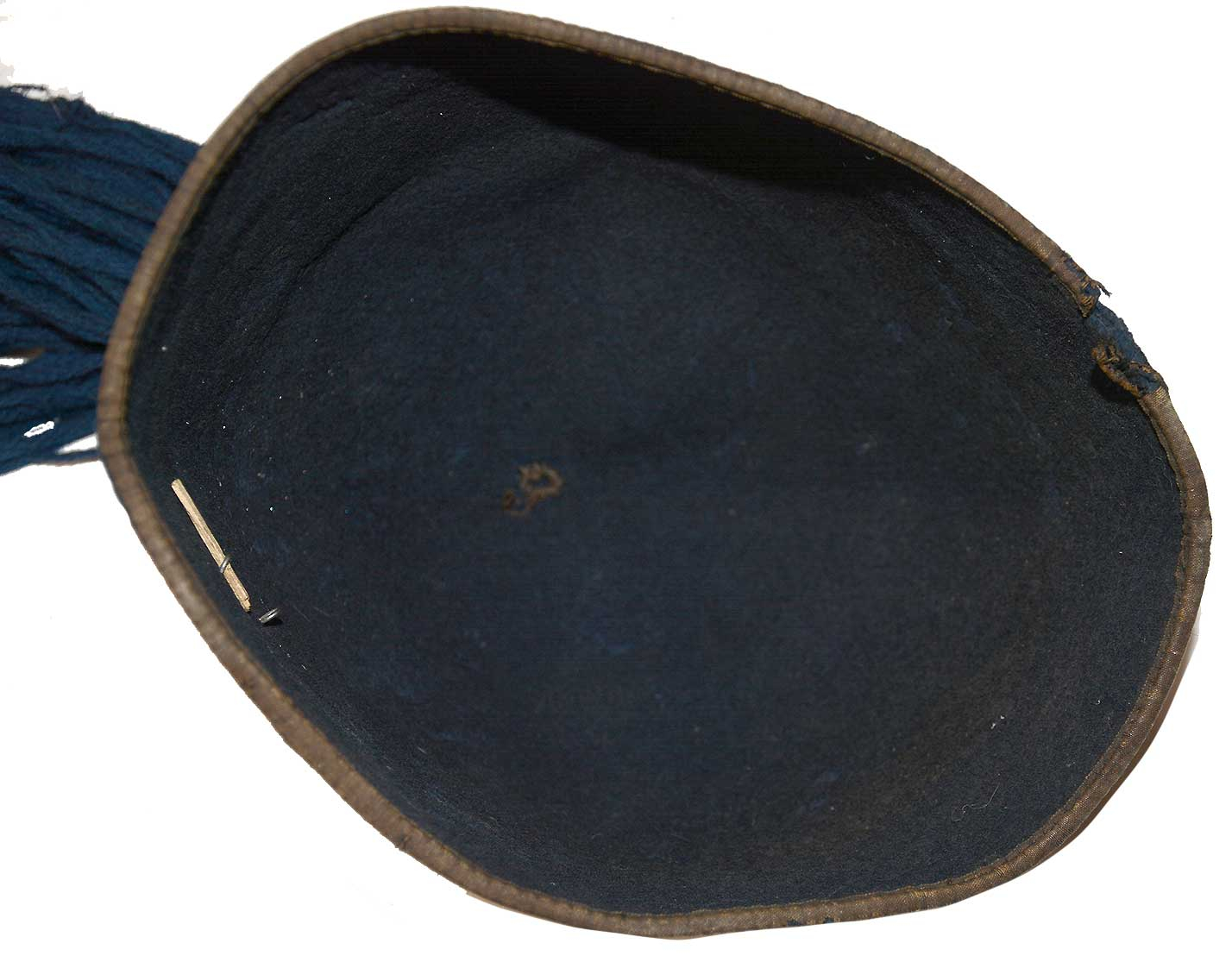
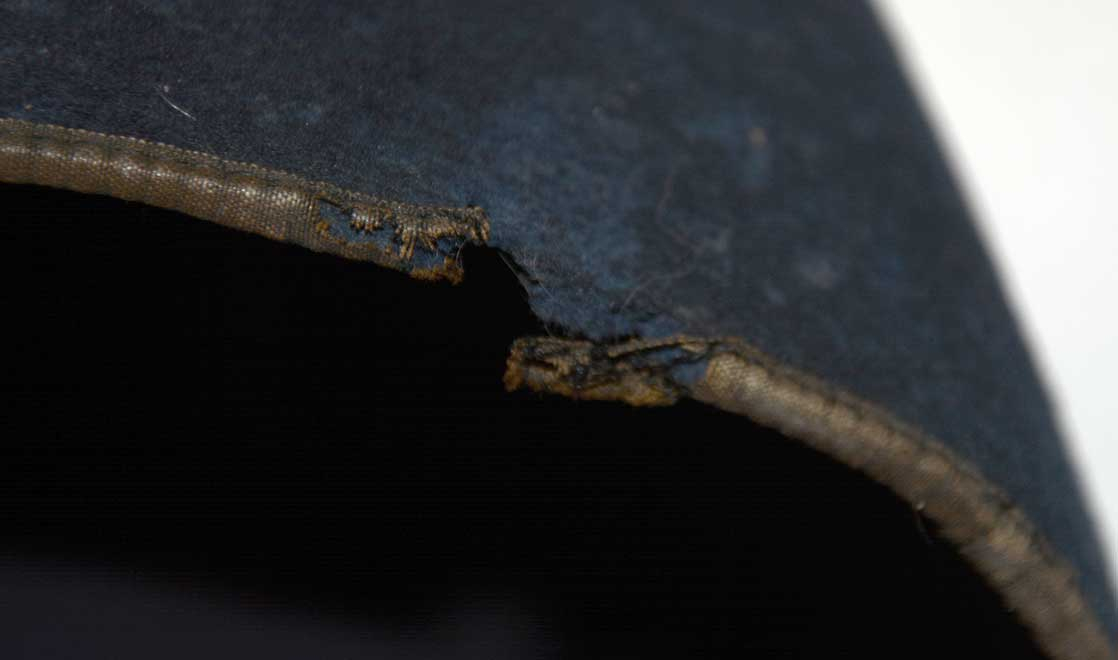
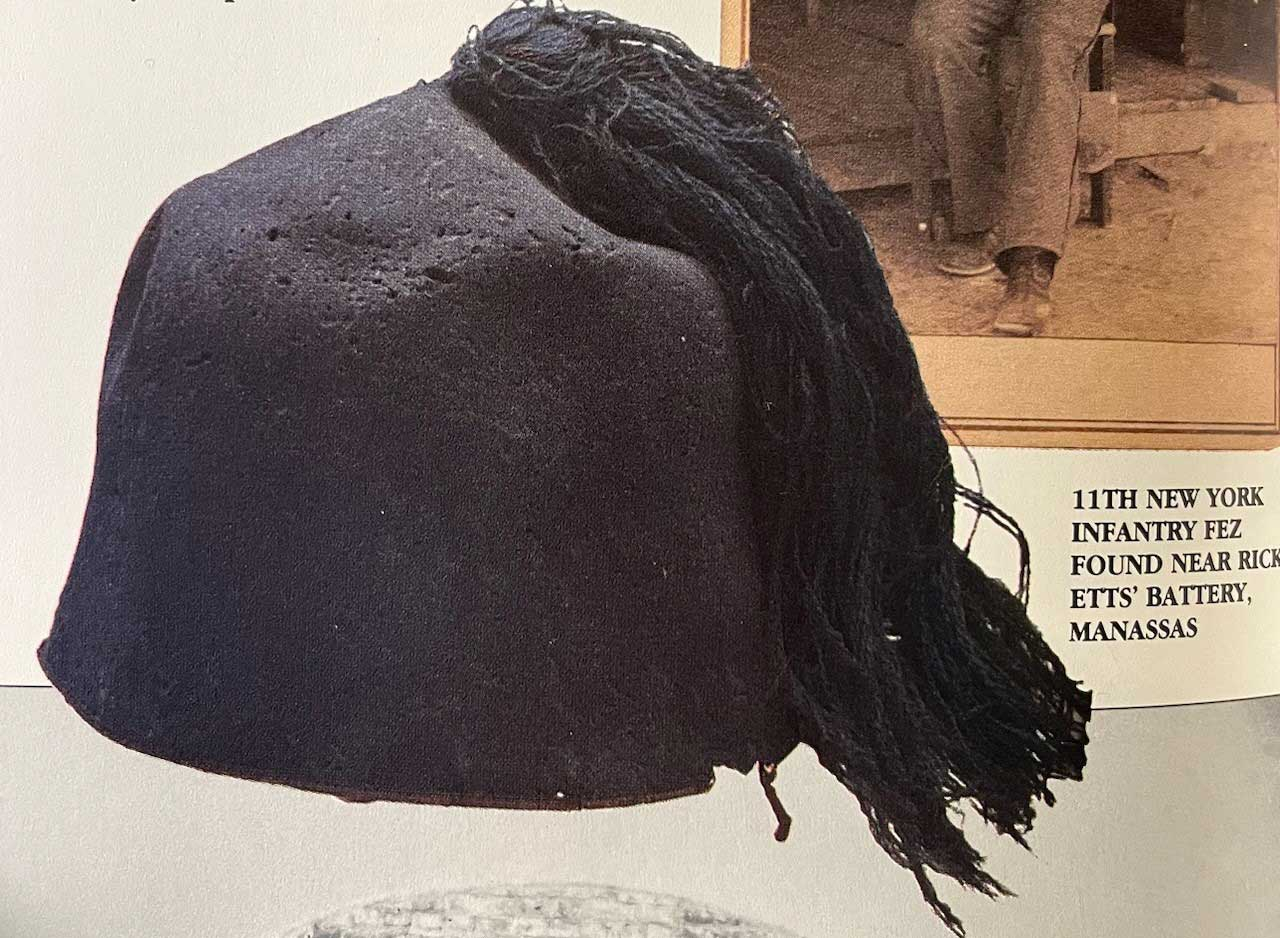
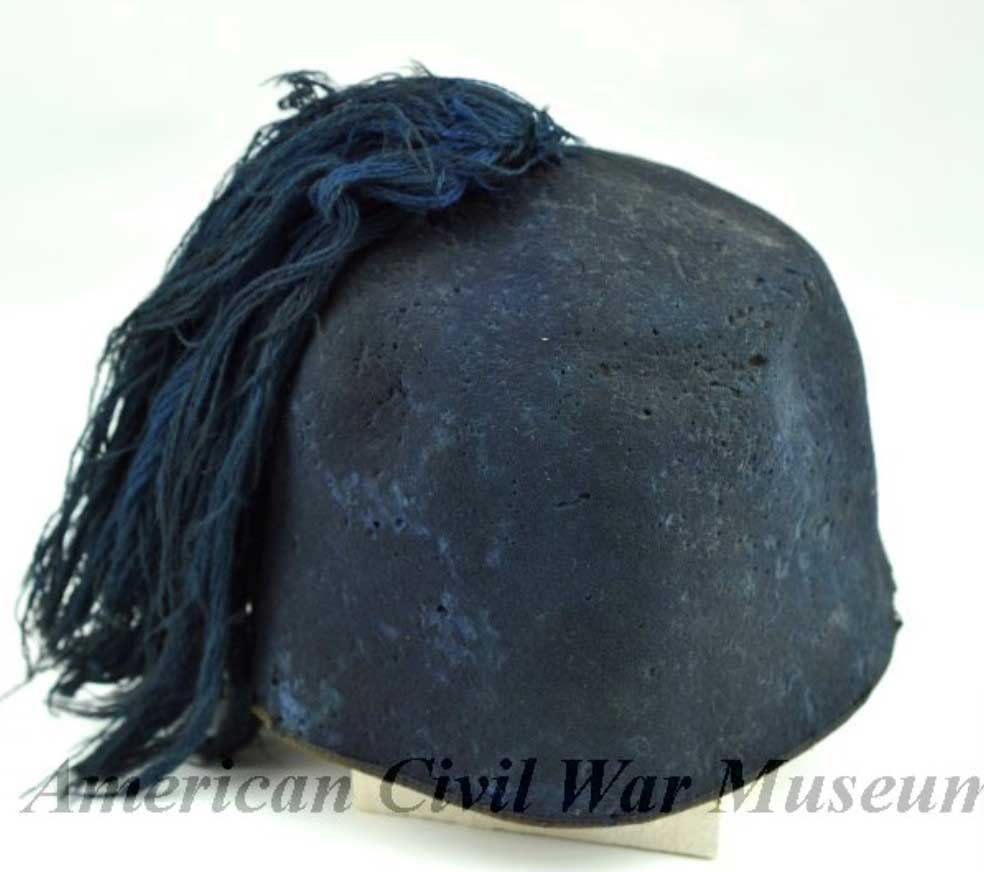
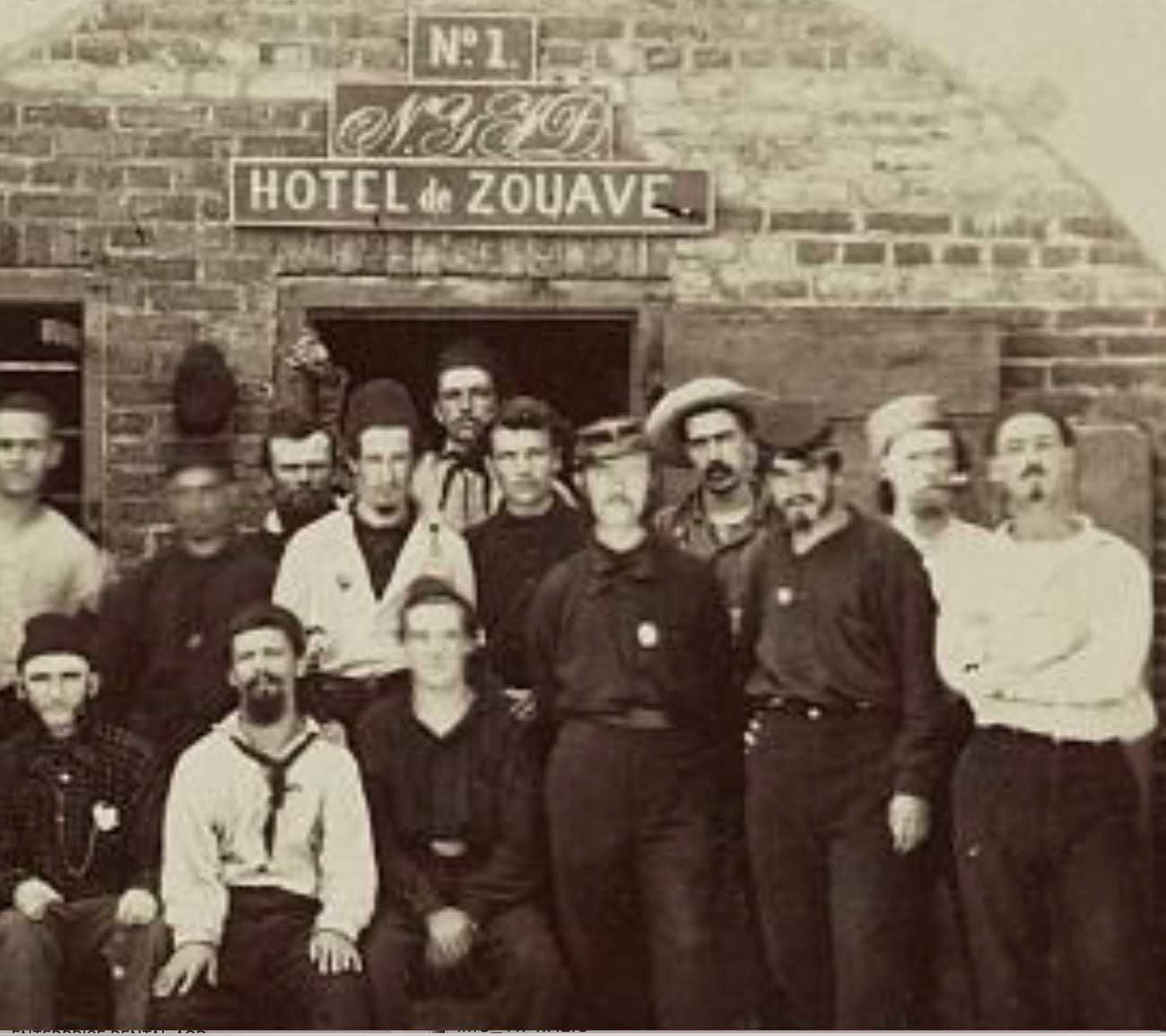
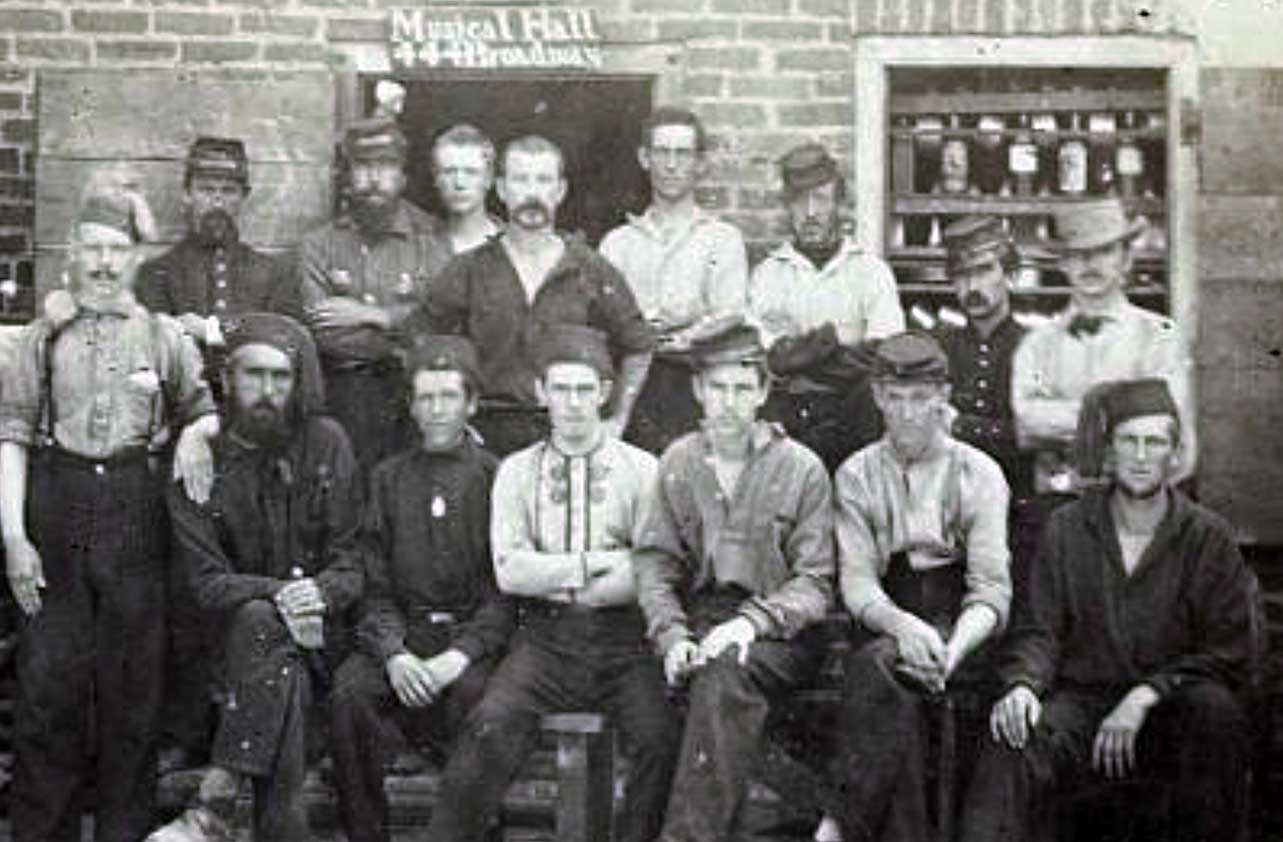
$4,500.00 SOLD
Quantity Available: None
Item Code: 480-362
Civil War zouave fezzes show up in different color combinations of fez body and tassel specific to certain regiments. This one has an unusual dark blue body and medium-dark blue tassel, a color combination worn at First Bull Run by the 11th New York, the Ellsworth Zouaves, drawn from their second issue of uniforms, provided by the government shortly before that battle, where the regiment was heavily engaged at Henry House Hill and in covering the Union retreat. This association is strengthened by its provenance through a respected central New York collection to a G.A.R. post in the Adirondacks.
The dark blue felted wool cap stands about 7-inches tall and has a bound edge. The tassel has a very short cord about ½-inch long securing a knot to the top of the cap through which long blue wool yarn strands are doubled to form strands about 9-inches long. In addition to the color, this close placement of the knot to top of cap corresponds to a well-documented example in the Confederate Museum in Richmond, now the American Civil War Museum, which is pictured on page 132 of Arms and Equipment of the Union in the Time-Life series. That cap, according to museum records, was found on the field of First Bull Run by Maryland Confederate General Bradley Johnson by the body of a zouave lying near Rickett’s battery on Henry House Hill. This was the focus of the regiment’s fighting in support of the Union artillery and then in attempts to retake it. The first issue uniforms of the regiment included red fezzes with blue tassels, but despite dissatisfaction with other elements of the second issue uniforms, distributed in June, the Bradley Johnson trophy makes clear that some of the men wore the second issue blue fez into battle.
The history of the regiment is too well known to need much repeating. Ellsworth, an acquaintance of Lincoln, had led a national tour of his Chicago-based U.S. Zouave Cadets in drill competitions in 1860 and received authorization to raise a ninety-day regiment for U.S. service, but which ended up falling under New York’s early-war specifications for two-years’ service. In any case, he raised the regiment in short order, drawing from New York City’s firemen, known for their courage and daring, rushing the regiment on April 29 to Washington on April 29, where it arrived on May 2 and was mustered-in May 7, 1861. They performed mainly picket and guard duty until May 24, the day after Virginia voted to secede, when they were among the forces crossing over the Potomac to Alexandria, where Ellsworth was killed in taking down a Confederate flag. The regiment was thereafter commanded by Lt. Col. Farnum, who led them at Bull Run as part of Wilcox’s brigade in Heintzelman’s division. At Henry House Hill they fought on the right of the Union line, and suffered 35 killed, 74 wounded and another 68 captured or missing in helping to drive off a Confederate cavalry charge, support the batteries of Ricketts and Griffin, and then take part in several charges in the attempt to retake them after a mistaken order to hold their fire allowed their capture, and lastly in covering the Union retreat. Photos of some of them as prisoners of war in southern hands clearly show fezzes, though the color cannot be determined. After the battle the regiment returned to New York City to reorganize and returned to Virginia to serve from September 1861 through May 1862 on the Peninsula, returning to New York City again on May 7 to muster out June 2.
The cap is in very good condition, solid and with good color. It has spots of shallow moth tracking overall, and pinprick moth nips, mainly on the lower portion of the cap, but neither are particularly noticeable because of the dark color. There is a short ½-inch long section of the edge binding that is worn. This would be at the back of the cap, over the wearer’s neck, a natural spot for wear. The front of the cap is marked by a 7/8 inch tall company letter “B” attached by two loops about 2-inches from edge of the cap. A small piece of wood secures one loop, likely a replacement for an original lost leather thong.
This is great looking cap and while we can’t guarantee another zouave unit did not also use this color combination, there would not be many and this certainly seems a match for Bradley Johnson recovered example. [sr] [ph:L]
~~~~~~~~~~~~~~~~~~~~~~~~~~~~~~~~~~~
THIS ITEM, AS WITH ALL OTHER ITEMS AVAILABLE ON OUR WEB SITE,
MAY BE PURCHASED THROUGH OUR LAYAWAY PROGRAM.
CLICK HERE FOR OUR POLICIES AND TERMS.
THANK YOU!
Inquire About CIVIL WAR ZOUAVE FEZ, LIKELY SECOND-ISSUE 11th NEW YORK, ELLSWORTH ZOUAVES
Most Popular
Historical Firearms Stolen From The National Civil War Museum In Harrisburg, Pa »
Theft From Gravesite Of Gen. John Reynolds »
Selection Of Unframed Prints By Don Troiani »
Fine Condition Brass Infantry Bugle Insignia »
Large English Bowie Knife With Sheath 1870’S – 1880’S »
Imported (Clauberg) Us Model 1860 Light Cavalry Officer's Saber »
featured item
IMPORT MODEL 1850 CIVIL WAR FIELD & STAFF OFFICER’S SWORD ID’D TO COL. RICHARD M. CORWINE, MEMBER OF GENERAL FREMONT’S STAFF
Original Civil War Model 1850 Field & Staff officer’s sword in nice condition complete with its metal scabbard. Sword is unmarked and is no doubt an import item. It is identified by a presentation inscription to R. M. Corwine, Aide-de-camp to… (870-157). Learn More »


